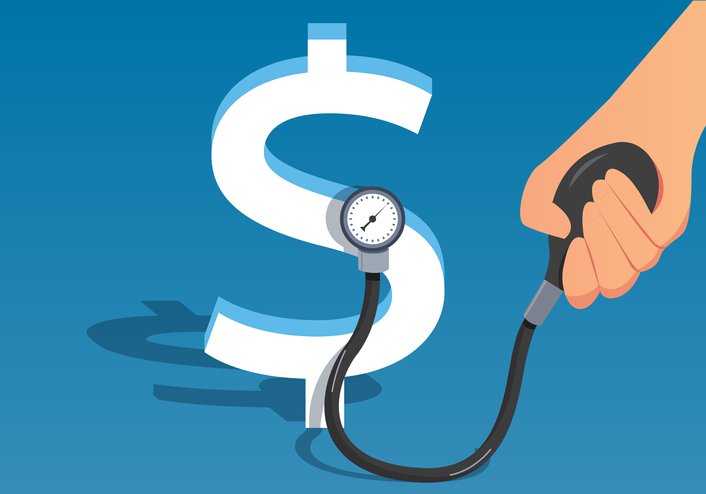9 Ways to Keep Your Credit Score as High as Possible (Part II)
In our previous post, we spoke about the fact that there are so many credit score providers out there, all providing different results, and chances are none of those results are the credit score lenders see when you apply for a loan product such as a mortgage, credit card or car loan.
How are you supposed to optimize your credit score when you don’t even know what it is? The answer is by focusing more on your overall “credit hygiene” rather than on any one particular score.
Dental hygiene is preventative maintenance to ensure your teeth and gums are the best they can be at all times. Having a similar routine for your personal credit history can be equally important to avoid problems when you least need them—like when buying or refinancing a home.
If you are always employing best practices, then you are optimizing your credit score and your overall credit profile, regardless of who is checking, when they are checking and what is being counted and reported.
Unfortunately, more credit in the wrong hands can lead to abuse. Some people rely on credit to supplement their income and end up in an untenable situation. These credit hygiene tips are intended for people who are responsible with credit.
Never Go Over Limits – Leave Some Room
 When you have a credit card or line of credit hovering around its limit, you are at risk of going over, which is not a good thing for your credit score. And it might happen innocently—you started out under the limit, but with interest charges and possible over-limit penalties, you are now in the Badlands.
When you have a credit card or line of credit hovering around its limit, you are at risk of going over, which is not a good thing for your credit score. And it might happen innocently—you started out under the limit, but with interest charges and possible over-limit penalties, you are now in the Badlands.
Even when you deploy a balance transfer promotion or some form of interest-free period, you should leave room at the top.
It’s like when ordering a coffee, leave room at the top for the milk—even if you take it black, avoid spillages.
Accept All Offers of Increased Limits
You should usually welcome credit limit increases. You look healthier and stronger to the casual reader, because your limits have some heft to them. And perforce, you instantly reduce your percentage utilization of credit with an increased limit. This often results in a higher credit score.
Equifax Canada states percentage utilization has a 30% weighting on your personal credit score.
Spread Around Your Balances
When maximizing your personal credit score, you should look at your utilization of available credit for each individual credit facility. If your goal is to maximize your score at all times, but you do carry credit balances, try to spread it around, rather than cluster it all on one card. One way this can arise is when you use balance transfer promotions to reduce interest expenses. You’ll have to evaluate the trade-offs of each approach.
Exercise All Cards and Lines of Credit
 We tend to favour one particular credit card (maybe we like their rewards program) and we might neglect our other cards. If you are trying to maximize your credit score, it is good to use all available credit fairly regularly, even if it’s just for a brief moment every few months.
We tend to favour one particular credit card (maybe we like their rewards program) and we might neglect our other cards. If you are trying to maximize your credit score, it is good to use all available credit fairly regularly, even if it’s just for a brief moment every few months.
These trade lines can get stale and they are not pulling their full weight. Update the DLA (date of last activity) with a modest transaction and then pay it online immediately.
Coincidentally, only yesterday I received a message from my bank telling me my personal line of credit was now dormant and no longer accessible. I had not used it in eighteen months—not following my own guideline!
If in Doubt, Do NOT Close a Credit Card
It will rarely be correct to close older, unused credit facilities since they are contributing “score juice.” If you want to close the card to avoid an annual fee, just ask the card issuer to downgrade your card to a free card. You will retain your valuable history, but avoid annual fees (and the spectre of forgetting to pay the fee).
Equifax Canada states your history can have a 15% weighting on your personal credit score.
Use It or Lose It
If you never borrow money, or you have a solitary credit card in your wallet and you never actually use it, eventually you will have nothing generating a credit score for you. And you may end up with no score at all. And that can really cramp your style when you need a mortgage.
Pay Your Active Credit Cards At Least Twice Monthly – The Statement Date Strategy
I keep track of the statement cycle of my oft-used cards, and I pay the balance in full several days BEFORE the next statement is issued. The card issuer typically reports my statement date balance to the credit bureaus – so I always want that balance to be small, and that way my utilization ratios are really good.
And within a week or so of the statement being issued, I go back in and pay the statement balance in full. This ensures I never have interest charges on my core credit card usage, since the balance is always brought to zero before the due date.
The smaller the limits on your credit cards, the more dramatic the impact of the statement date strategy.
Pay Disputed Items – Then Argue Your Position
 You may know someone who was offended by charges they were certain did not belong on their credit card statement. They refused to pay and preferred to wait out the investigation process. Unfortunately, by doing that they run the risk of interest charges and late payments.
You may know someone who was offended by charges they were certain did not belong on their credit card statement. They refused to pay and preferred to wait out the investigation process. Unfortunately, by doing that they run the risk of interest charges and late payments.
My own experience has always been the card issuers do the right thing when fraud or outright billing errors are at hand. So, I pay and wait for the credit to come back to my account when the investigation is complete.
NOTE – if the fraudulent charges are very large and quite serious, this is a different matter altogether and you should strategize the best approach with the authorities and management at the card issuer.
Scour & Clean All Reporting Errors
There might be some incorrect information in your personal credit history that is needlessly dragging down your score. Those are easy and necessary fixes. And the impact on the personal credit score can be profound. There are many types of errors, but two examples are:
- You have two or more personal profiles with the credit bureau, so your information is scattered and diffused. Combining it all into one credit report could well increase your score and strengthen your look. (This often happens to people whose name is hard to spell, or who have legally changed their name.)
- You completed a consumer proposal and all the debts included in the proposal should be reporting zero balances and should NOT be “R9s.”
Each agency provides a mechanism on its website for reporting errors. Mortgage brokers can fast-track an investigation with Equifax Canada for their clients. What might take a consumer two months we can often get done in a few days.
The Takeaway
The credit reporting agencies may generate a different score for credit card issuers, car dealerships or mortgage lenders, and the score they provide the consumer upon request is typically none of these. Therefore, you should be more concerned with ensuring you are always using best practices that will score well, regardless of who is doing the measuring.
The credit hygiene strategy ensures your credit history is a weapon you can wield with confidence, and that whatever method is generating your credit score, it will always be optimized and at its maximum potential.
 CIBC economists say the housing market faces challenges in the coming 12 to 18 months, particularly once the mortgage deferral periods run out.
CIBC economists say the housing market faces challenges in the coming 12 to 18 months, particularly once the mortgage deferral periods run out. CMHC attributed this to “run-off of existing policies-in-force, primarily in portfolio insurance due to reduced volumes since the introduction of pricing increases commensurate with revised regulatory capital requirements in 2017.”
CMHC attributed this to “run-off of existing policies-in-force, primarily in portfolio insurance due to reduced volumes since the introduction of pricing increases commensurate with revised regulatory capital requirements in 2017.” CBC News ran a
CBC News ran a  “If house prices do soften, from a public policy perspective, that’s precisely the time to bolster support for first-time buyers. Making homes more difficult to finance will, once again, reserve properties for purchase by the already well-capitalized.”
“If house prices do soften, from a public policy perspective, that’s precisely the time to bolster support for first-time buyers. Making homes more difficult to finance will, once again, reserve properties for purchase by the already well-capitalized.”







 Coincidentally, on the same day of the BoC’s interest rate announcement, the Toronto Real Estate Board announced that the average home price in the Greater Toronto Area rose nearly 17% year-over-year in February to $910,290 (or $989,218 in the City of Toronto).
Coincidentally, on the same day of the BoC’s interest rate announcement, the Toronto Real Estate Board announced that the average home price in the Greater Toronto Area rose nearly 17% year-over-year in February to $910,290 (or $989,218 in the City of Toronto).



